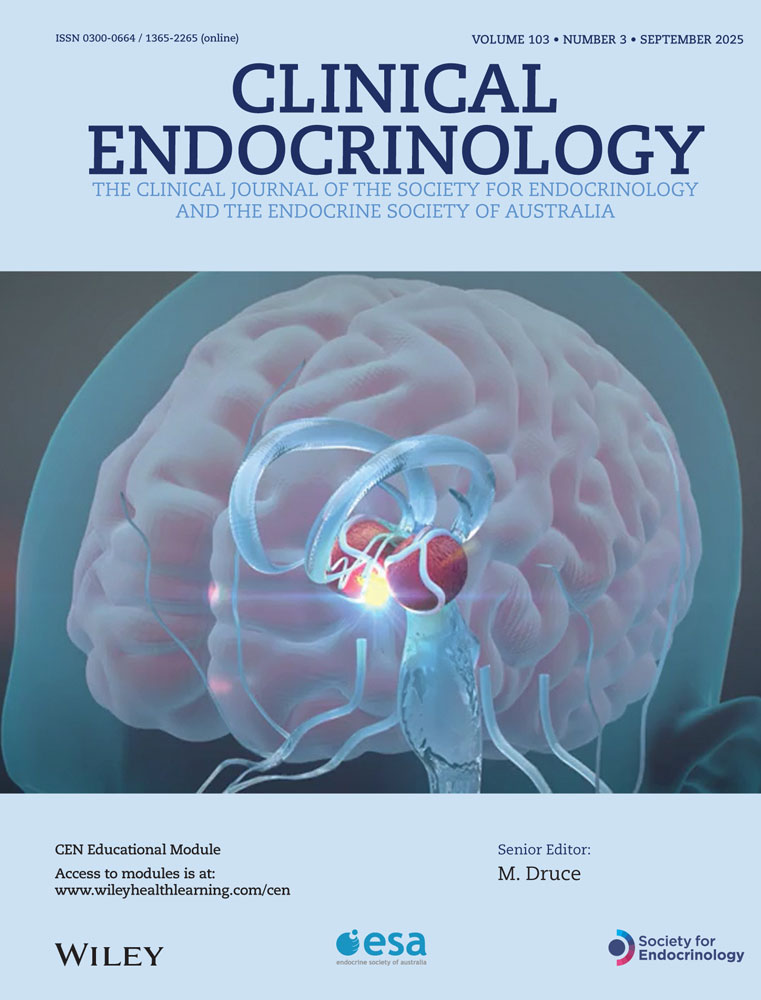In vivo and in vitro effects of AVP and V1a receptor antagonist on Cushing's syndrome due to ACTH-independent bilateral macronodular adrenocortical hyperplasia
Abstract
We examined the possibility that AVP and V1a receptors were involved in regulating cortisol production in a 49 year old man with ACTH-independent bilateral macronodular adrenocortical hyperplasia (AIMAH), and investigated the effects of a V1a receptor antagonist. An iv injection of a small dose (0.1 or 0.3 U) of AVP, insulin-induced hypoglycaemia, upright posture tests, and oral administration of a V1a receptor antagonist (OPC-21268; 300 mg), and its repeated administration at a dose of 600 mg/day for 8 days were performed. An in vitro study of dispersed cells obtained from resected AIMAH tissue was also conducted. Plasma ACTH, AVP and cortisol levels and 24-h urinary free cortisol excretion were measured in the in vivo studies and cortisol concentrations in incubation media in the in vitro study. Injection of small doses of AVP stimulated cortisol secretion without any elevation of plasma ACTH. Insulin-induced hypoglycaemia caused a rise in plasma AVP followed by an increase in plasma cortisol. Although plasma cortisol levels were not affected by single or repeated administrations of OPC-21268, 24-h urinary free cortisol excretion was significantly decreased by the repeated treatment. In the in vitro study, more cortisol was stimulated by AVP from adrenal cells of the AIMAH tissue than from those of a normal adrenal gland, and this secretion was completely suppressed by OPC-21268. These results suggested that hypersensitivity to AVP may have contributed to overproduction of cortisol in this case of ACTH-independent bilateral macronodular adrenocortical hyperplasia, and may have contributed to its pathogenesis.




